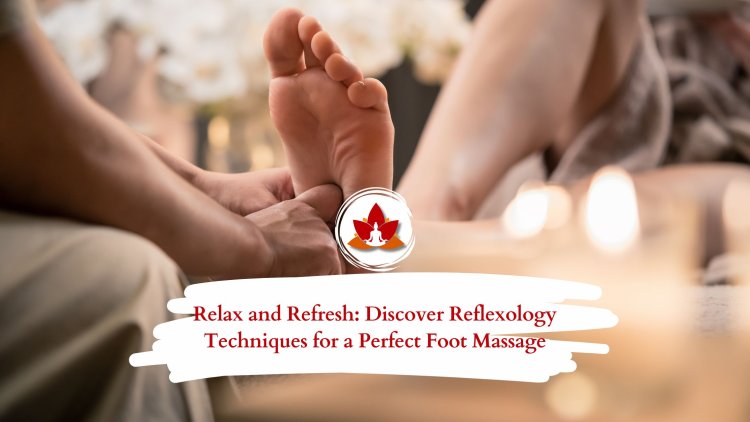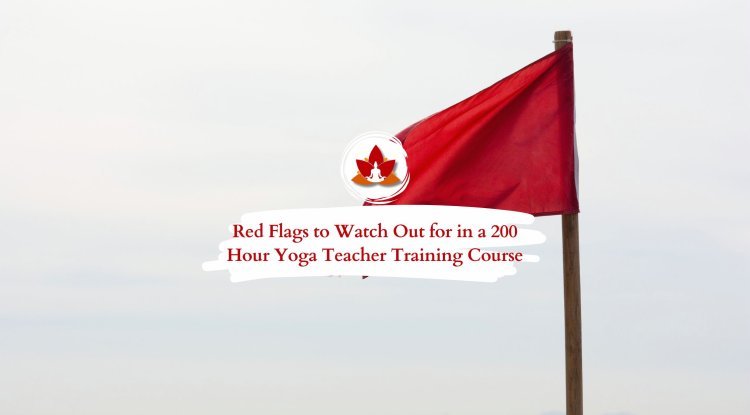Relax and Refresh: Discover Reflexology Techniques for a Perfect Foot Massage

Imagine coming home after a long day, sinking into a cozy chair, and treating yourself to a foot massage that feels like a spa visit. That is what reflexology offers, simple yet effective. It can bring blissful relaxation into the comfort of your home by stimulating the specific points on your feet and relieving tension, improving circulation, and restoring your energy levels.
This guide throws light upon how you can perfect reflexology techniques to treat and pamper the feet and improve general well-being.
What is Reflexology?
Reflexology is an ancient healing practice with specific points in the feet, hands, and ears corresponding to the body's different parts. Applying pressure on these points helps to reduce stress, improves organ function, and promotes natural healing.
For example, it is said that the tips of your toe connect to your head, while the arch of the foot to your inner organs. Reflexology is not an ordinary foot massage; it is a holistic way of relaxation and rejuvenation.
How is Reflexology Different from Massage
In the opinion of Kevin Monterrosa, lead therapist at Auberge Du Soleil, a luxury resort and spa in Napa Valley, California. "Reflexology, especially on feet, is not an application of oils, lotions or creams; it's an exercise of thumbs, fingers sometimes in addition to tools like the gua sha to place pressure on specific areas".
Key Differences Between Reflexology and Massage
1. Use of Oil or Cream
In traditional massage, oils, lotions, or creams must be used to create a smooth glide over the skin. Reflexology does not use such products. The whole treatment depends on applying direct pressure over certain reflex points using one's hands or props, making it quite unlike a traditionally given massage.
2. Areas of Treatment Focus
While massages focus on the whole body, reflexology focuses more on the feet, though sometimes on the hands and ears. According to Monterrosa, reflexology is a technique aimed at stimulating the reflex points that correspond to the different organs and systems of the body in order to make them work better. Unlike massage, it usually focuses on soft tissues to remove tension and promote health.
3. Techniques Used
The techniques are also different. A reflexologist would use the fingers to push the reflex points during a session strictly. A massage therapist can use the hands, knuckles, forearms, elbows, or even the feet to get tension in the body.
What can a reflexologist learn from your feet?
Your feet are much more than a foundation to walk upon. They are a map of your overall wellness. Often, reflexology applies foot charts to find the pressure points that correspond with different organs and systems throughout your body. Though reflexologists commonly apply these charts to provide relief for symptoms, they can also identify potential problems within your body.
What Reflexologists Can Learn From Your Feet
1. Potential Organ Problems
They can detect possible problems involved with internal organs by checking tenderness or firmness in particular locations of the feet. For example, tightness in any zone may indicate tension and malfunction in the related human body system.
2. Psychological and Life Cycles
Some practitioners study the art of reading toes, a technique that interprets the shape and position of toes to reveal life patterns and emotional experiences. According to Monterrosa, the toes might unveil some aspects of a person's life story and give better insight into their well-being.
Why Reflexology Points May Hurt
Sometimes, pain experienced during reflexology means something may be wrong in a part of the body that is being reflected at a specific point. Certain pain while being attended to on some reflexology points are deemed congested areas of the body and tenderness or hurt may be felt at those points that represent the congested parts.
The good news is that regular reflexology sessions can help alleviate this discomfort. Through repeated manipulation of pressure points, blocked energy pathways can be cleared, reducing pain and inflammation over time. Consistent sessions promote progressive relief, helping your body regain balance and function more effectively.
Tips for Beginners: Getting Started with Reflexology
For someone just starting to use reflexology, there's nothing wrong with getting set up the right way: here's everything you'll need to get your practice going:
1. Use Light Pressure
Start by applying minimal pressure on the reflex points of your feet. This enables your body to adjust and makes certain that you don't induce pain. Increase the pressures gradually as you get conversant with the procedure and can understand the comfort levels
2. Consistency
Full reflexology experiences require consistency. Sittings should be done frequently - at least once a week or several times a month. With time, these help in blood circulation, stress release, and elimination of unbalance.
3. Good Oil or Cream
While traditional reflexology does not call for oils, adding excellent-quality essential oils or creams can intensify your reflexology experience. Products such as those carrying calming aromas like lavender or eucalyptus can make the session feel so much more relaxing and pleasing.
Benefits of Reflexology
It was within these ancient traditions that foot reflexology gained recognition for promoting well-being among all persons across the globe. Scientific as well as anecdotal evidence implies it has various physical, emotional, and mental benefits that can improve the health conditions of those who receive it.
Let us take a look at some of the well-known impacts of reflexology on humans:
Health Conditions Improved By Reflexology
Reflexologists claim it is useful to treat various conditions such as:
-
Low-Back Pain: A potential treatment for lower back pain.
-
Migraines and Headaches: Targeted reflex points may soothe tension and migraine.
-
Multiple Sclerosis (MS): Relief for spasticity, urinary problems, and general weakening of muscles.
-
Peripheral Neuropathy: For diabetic people; it may reduce painful neural sensations in the affected part, or even improve its functions.
-
Asthma: Reflexology may gradually diminish breathing problems.
-
Mental Health: The reflexology helps relax and decrease depression, anxiety, and stress
-
Sleep Disorders: It has been proved that Reflexology enhances sleep quality and fights against sleep disorders
-
Hypertension: Reflexology helps manage hypertension by providing relaxation.
-
Muscular Diseases: Easy stimulation alleviates muscular conditions
Reflexology for Pain Relief
Reflexology has proved to decrease several types of pain. It has emerged that reflexology can offer significant relief from backaches, with some studies demonstrating a reduction of as high as 31%.
What makes reflexology effective for people in terms of pain relief has to do with its function of inducing the release of endorphins-the body's natural analgesic chemicals. Through these endorphins not only does it relieve people of their discomfort but also of internal healing and relaxation.
Stress Reduction and Relaxation
Stress is amongst the most prominent causes of many diseases. Reflexology is proven to significantly help decrease stress. The entire process of reflexology has relaxed the body by enhancing relaxation and decreases tension inside it, minimizing the onset of stress-related health ailments.
Digestive Health
This helps in digestive function by encouraging reflex points linked to this function. It:
-
Allows for cleaning up the blocked colon.
-
Treats removing toxins.
-
Improves blood flow, thereby improving digestion
Despite the reduced occurrence of constipation as reported by some studies, further studies are required to confirm such a result.
Improves Sleep Quality
The effectiveness of foot reflexology towards improving sleep is extraordinary. According to research studies, it can fight against sleep disorders in adults. Thus, the quality and duration of sleep are improved.
Managing Symptoms of Diabetes
For diabetic patients, reflexology might be an alternative way of reducing symptoms without using the traditional medical treatment.Diabetes complications, such as diabetic foot, can cause ulcers, infections, and nerve damage. Reflexology has been shown to have the following effects:
-
Improvement of blood flow in the feet.
-
Healthier skin and hair growth in affected areas.
-
Soothing symptoms of nerve damage.
More research is required to learn how reflexology helps people during different stages of diabetes. However, its potential benefits for foot health are positive.
How Reflexology Works
It assumes that pressure points in the feet are linked to particular organs and systems within the body. Stimulating those points is how it will work to rebalance, improve circulation, and stimulate natural healing processes of the body.
Pressure Points in the Foot: A Guide to Reflexology Zones
Foot reflexology is based on the principle that specific pressure points on the foot correspond to various organs and systems in the body. Stimulating these points aims to promote healing, balance, and overall well-being.
Here's a breakdown of key pressure points in the foot and the areas they are thought to influence:
1. Top of the Toes
Corresponds to: Head and brain
Activating this region can reduce pain or pressure in the head, enhance concentration, and further clarity.
2. Centre of the Toes
Associated with: Face and sinuses
Pressure here may relieve congestion from the sinuses and also contribute to healthy circulation of blood on the face
3. End of the Toes
Associated with: Teeth, gums, and jaw
Reflexology in this area can help ease tension in the jaw, health of the gums, and even with pain in the teeth.
4. Base of the Pinky Toe
Connected to: Neck
This may help ease the pressure on the neck and keep the posture straight.
5. Outer Lateral Side of the Foot
Associated with: Arms, elbows, knees, and legs
These points may be used to improve mobility and decrease stiffness of these joints and limbs.
6. Outer Medial Side of the Foot
Associated with: Neck, brain stem, thymus, spine and bladder
Massaging this area may help promote health in spinal functions, immunity, and bladder.
7. Side of the Ankle
Associated with: Lower back
Reflexology to this area can ease discomfort in the lower back and help a better positioning.
8. Inner Side of the Ankle
Associated with: Lymph nodes, fallopian tubes and groin
Massaging this area will stimulate lymphatic flow, increase blood circulation and helps in female fertility.
9. Centre of the Top of the Foot
Associated with: The lungs, chest, breasts, upper back and the waistline
Massaging this pressure point will help improve breathing, loosen up upper tension in the back, and maintain chest health.
Common Reflexology Mistakes to Avoid
Reflexology can be a great tool for relaxation and holistic healing, but certain mistakes may limit its effectiveness or even cause discomfort. In order to make the most of your reflexology sessions, avoid these common pitfalls:
1. Applying Too Much Pressure
While reflexology calls for applying specific pressure on certain points of the feet, too much force causes discomfort or even pain. Always begin with light pressure and gradually increase it to your comfort level. Remember that reflexology is about stimulating, not straining, the body.
2. Ignore Sensitive Areas
Pay attention to any areas of sensitivity or tenderness during a session. These spots may indicate imbalances or issues in the corresponding parts of your body. Ignoring them could mean missing an opportunity to address underlying concerns. Instead, focus on these points gently to help release tension.
3. Skipping Relaxation
While physical pressure application is involved in reflexology, it is a procedure of relaxing the mind and spirit. You won't benefit fully from one session if you rush into or remain tensed all through. Take time to do this with a serene surrounding while giving yourself a chance for optimal benefits.
FAQs About Reflexology
Q: Is reflexology safe for everyone?
A. Yes, but pregnant or patients with other medical conditions should first consult a doctor.
Q: How often should I massage my feet?
A. 2-3 times a week. Even once a week is beneficial for stress and pain relief.
Q: Does reflexology really relieve stress and pain?
A. Reflexology works well for most individuals to release stress, and it is often used in conjunction with other techniques of pain management.
What's Your Reaction?


























